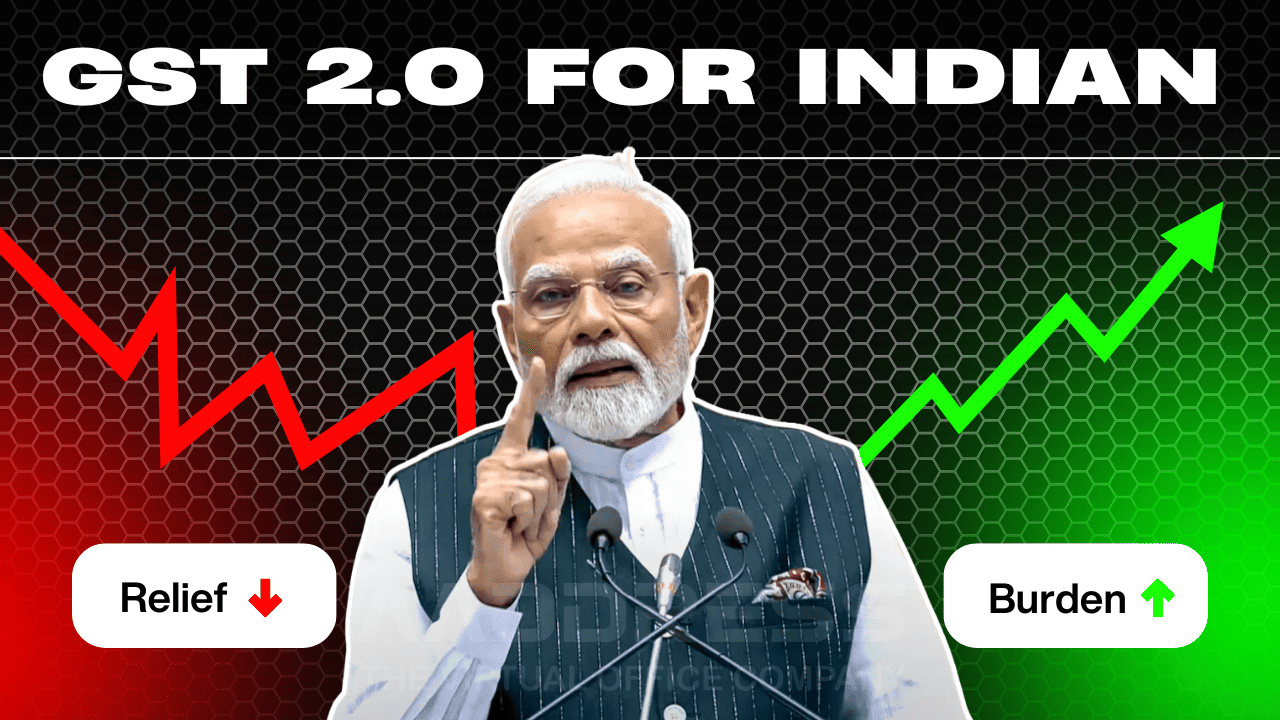Don’t just get a virtual office—let us help you build your business with our expert resources.Learn More
Understanding the Impact of GST on the Indian Economy: A Detailed Analysis

Highlights:
-
- The GST was introduced by the Indian government on July 1, 2017, as a singular indirect tax on the supply of goods and services, which replaced most of the existing indirect taxes levied in the country.
- GST has streamlined the tax system, making compliance more manageable for companies.
- The GST system in India continues to evolve with regular updates and changes, aimed at improving the ease of doing business for taxpayers and reducing the compliance burden.
- Per the data released by the finance ministry, India recorded gross Good and Services Tax (GST) revenue for the month of March 2024 at Rs 1.78 lakh crore, posting an increase of 11.5 per cent on-year.
Introduction:
The Goods and Services Tax (GST) implemented in India on July 1, 2017, marked a significant milestone in the country's economic landscape.
This comprehensive indirect tax reform aimed to streamline the complex tax structure prevailing in the country and foster economic growth.
In this blog post, we delve into the impact of GST on various sectors of the Indian economy, analyzing its implications on businesses, consumers, government revenue, and overall economic development.
Understanding GST:
GST is a destination-based tax levied on the supply of goods and services across the nation. It replaced a plethora of indirect taxes such as excise duty, service tax, value-added tax (VAT), and others, simplifying the taxation system and promoting ease of doing business.
The existing GST framework comprises of four tax brackets, ranging from 5%, 12%, 18%, and 28%. There's a potential for the removal of the 18% slab in the future, leading to the reclassification of items currently falling under this slab into either the 12% or 28% category.
Check this out for complete guide on what is GST in India?
Source Credit: https://www.youtube.com/@khangsresearchcentre1685
Impact on Businesses:
The pricing for businesses has undergone significant changes due to implementation of GST. With varying tax rates applied to different goods and services, businesses have been compelled to revise their pricing strategies to align with the updated tax framework.
Simplified Tax Structure:
One of the primary benefits of GST for businesses is the elimination of the cascading effect of taxes. Under the previous regime, businesses had to deal with a complex web of central and state taxes at different stages of the supply chain. GST streamlined this process by providing input tax credit, allowing businesses to set off taxes paid on inputs against the final tax liability.
Enhanced Compliance:
GST introduced a unified online portal for tax filing and registration, making compliance procedures more transparent and efficient. This digitization reduced paperwork and manual intervention, leading to greater ease of compliance for businesses.
Boost to Organized Sector:
The implementation of GST incentivized the formalization of the economy, as businesses were required to register and comply with tax regulations. This shift from the informal to the formal sector contributed to increased transparency, accountability, and tax revenues.
Here's a complete video guide on the Impact of GST on Businesses
Source Credit: https://www.youtube.com/@comhardtechnologies5720
Impact on Consumers:
Price Stability:
GST aimed to rationalize prices by eliminating the tax-on-tax system prevalent in the pre-GST era. The single tax structure reduced the overall tax burden on goods and services, leading to price stability and, in some cases, even a reduction in prices for consumers.
Increased Product Availability:
The simplified tax structure and improved logistics under GST facilitated smoother interstate movement of goods. This led to a wider availability of products across regions, benefitting consumers with greater choices and access to a variety of goods and services.
Impact on Government Revenue:
Broadening Tax Base:
GST widened the tax base by bringing previously untaxed sectors such as services under the tax net. This broadening of the tax base expanded the revenue potential for the government, enabling it to fund developmental initiatives and public welfare programs.
Improved Tax Compliance:
The introduction of GST increased tax compliance due to its stringent monitoring mechanisms and penalties for non-compliance. The enhanced compliance culture translated into higher tax collections, bolstering government revenue in the long run.
Here's a complete video guide on the Impact of GST on Government
Source Credit: https://www.youtube.com/@Viral_Khan_Sir
GST Tax Slab Description
| GST Tax Slab | Description |
|---|---|
| 0% | This tax slab applies to essential goods and services such as food, healthcare, and education, ensuring these items remain affordable for the public. |
| 5% | Goods and services in this category include essentials such as household items, transportation services, and small restaurants, designed to maintain moderate prices for consumers. |
| 12% | Items like processed food, computers, and mobile phones fall within this slab, balancing revenue generation with affordability for consumers. |
| 18% | This tax slab encompasses a variety of goods and services such as clothing, electronics, and financial services. It aims to apply a moderate tax rate across these different categories. |
| 28% | Luxury items such as high-end cars, tobacco products, and premium services are subject to this slab, imposing a higher tax rate on non-essential goods and services. |
Impact on Economic Development:
Boost to GDP Growth:
GST aimed to promote economic growth by fostering a conducive business environment and reducing transaction costs. The simplification of tax procedures, removal of inter-state barriers, and promotion of the ease of doing business contributed to a favorable climate for investment and entrepreneurship, ultimately driving GDP growth.
Streamlined Supply Chain:
The seamless flow of goods across state borders under GST streamlined the supply chain, reducing transportation time and costs. This efficiency improvement positively impacted sectors reliant on logistics, such as manufacturing and e-commerce, enhancing their competitiveness in both domestic and international markets.
Encouragement of Export:
GST introduced various export promotion schemes and incentives to boost the competitiveness of Indian exports in the global market. The availability of input tax credit and quicker refund mechanisms under GST facilitated exports, contributing to foreign exchange earnings and economic development.
Here's a complete video guide on the Impact of GST on Economy
Source Credit: https://www.youtube.com/@studyiqofficial
Conclusion:
The implementation of GST in India has brought about a paradigm shift in the country's tax regime, ushering in a new era of simplicity, efficiency, and transparency.
While the transition to GST posed initial challenges for businesses and the government, its long-term benefits are undeniable.
From simplifying tax procedures and enhancing compliance to fostering economic growth and development, GST has emerged as a catalyst for transformation in the Indian economy, laying the groundwork for a more robust and resilient future.
Subscribe To Our Newsletter
Conquer your day with daily search marketing news.
Most popular Blogs
Virtual Address vs Home Address for Business Registration in India
The most important thing you need for starting your business in India is an official...
Read Full ArticleReading Time: 2 minutes 45 seconds.GST 2.0 Explained: What Will Get Cheaper for Indian Consumers in 2025?
India is about to reform its goods and services tax (GST) since its introduction in...
Read Full ArticleReading Time: 5 mins.Top 5 Locations in Delhi to Set Up Your Virtual Office
When you start a business in Delhi, there's always that one uncle or friend who...
Read Full ArticleReading Time: 5 min.How to Start Water Bottle Business in India: A Practical Guide
Starting a water bottle business in India can be a smart and rewarding move. ...
Read Full ArticleReading Time: 4 min.



